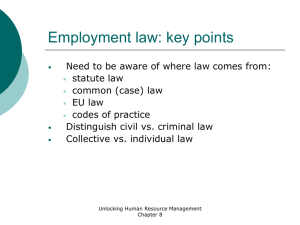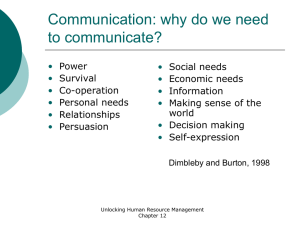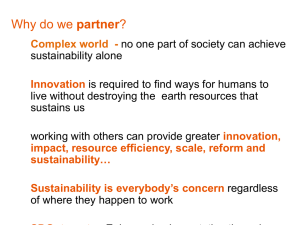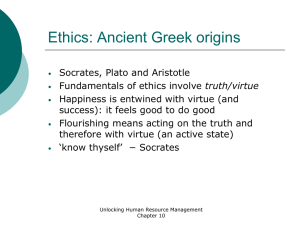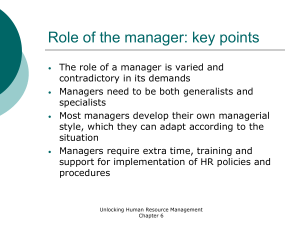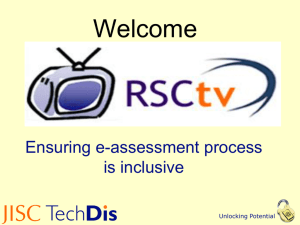Business partnering: key points
advertisement
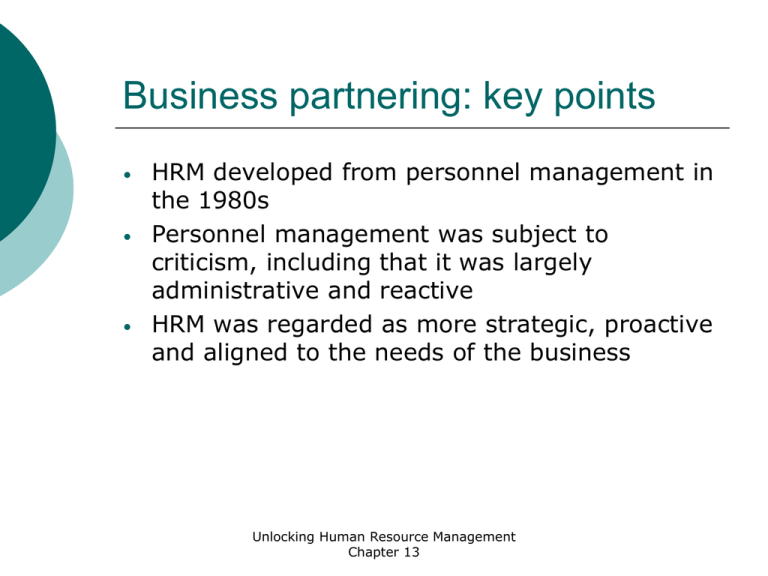
Business partnering: key points • • • HRM developed from personnel management in the 1980s Personnel management was subject to criticism, including that it was largely administrative and reactive HRM was regarded as more strategic, proactive and aligned to the needs of the business Unlocking Human Resource Management Chapter 13 HR in practice: key points • • • Surveys* suggest a change in the aspiration of the HR function, i.e. how it would like to be Such surveys* also provide some evidence for actual change in the function The changes include moving from a reactive role to one that adds business value and has a more strategic perspective * See for example CIPD, 2003, Where we are, where we’re heading Survey Report Unlocking Human Resource Management Chapter 13 Role(s) of the HR Manager: key points • • • Various attempts to classify personnel management and HR roles Examples of personnel roles include an administrative role, a welfare role and an industrial relations role Storey’s (1992) adapted model outlines four roles for HR: • service provider • regulator/internal contractor • adviser • changemaker Unlocking Human Resource Management Chapter 13 HR business partnering: key points • • • Ulrich’s original model outlines four HR roles: • administrative expert • employee champion • change agent • strategic partner This was later updated to five Ulrich’s ideas have been influential, particularly with regard to the strategic partner role Unlocking Human Resource Management Chapter 13 Ulrich’s model in practice: key points • • • • Evidence of implementation of the model by organisations, but often only partially One implication has been restructuring of some HR functions An example of restructuring is the ‘three-legged stool’: shared services, centres of excellence and strategic business partners Key reasons given for implementation: efficiency and cost savings, competitive pressures and rising expectations of HR Unlocking Human Resource Management Chapter 13 What then is business partnering?: key points • • • Ulrich sees the business partner as being part of each of his four (or five) roles In practice, the term has tended to be used either for more senior strategic HR posts or for HR middle managers working with business units In practice it is argued that a business partner is someone who is part of management team, understands the business and ensures that people issues are taken into consideration Unlocking Human Resource Management Chapter 13 Implementing business partnering: key points • • • • Organisations need a clear rationale for implementation Key drivers can include: to align people management practices to business goals, to be accessible to managers and to improve service delivery Needs proper planning and preparation Line managers in particular need to understand the implications Unlocking Human Resource Management Chapter 13 Requirements of business partner role: key points • • • The role is different from traditional ones and therefore has different requirements Organisations may have difficulty recruiting people with the right skills and abilities for the role Requirements include: strategic thinking, consultancy skills, business and financial understanding, change management skills, networking, influencing and political awareness skills Unlocking Human Resource Management Chapter 13 Issues and possible problems: key points • • • • • Possible difficulties in application of the model May be difficulties in recruiting the right people for the role Cultural shift needed Splitting HR function into three may create ‘boundary problems’ For HR business partners to be successful, it is necessary that the other elements of HR are fully functioning and efficient Unlocking Human Resource Management Chapter 13 Learning summary By the end of this chapter you should know: • The key ways in which HRM can be seen to differ from personnel management • The key roles of Ulrich’s model • What business partnering looks like in practice • How to successfully implement business partnering • The key requirements of the role • The potential issues and possible problems and how these can be tackled Unlocking Human Resource Management Chapter 13


